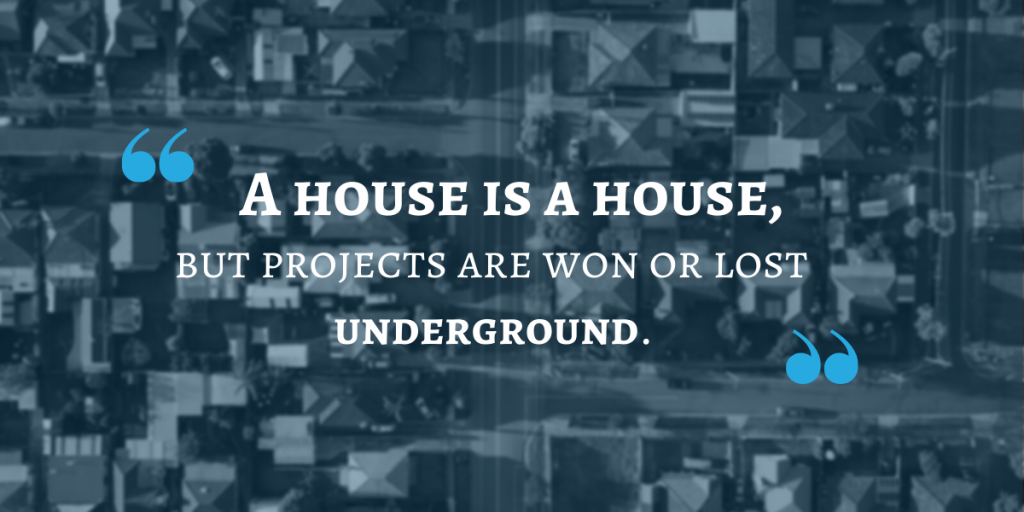
A quantity surveyor proclaimed during a design team meeting that “a house is a house, but projects are won or lost underground”. The point that he was crudely making is that the cost of building a house can be estimated, but the uncertainty of what will be discovered underground can create a hole in a developer’s budget that can never be recovered.
The uncertainty of what will happen underground makes seasoned developers form special relationships with their civil engineers. Veteran developers know that having a skilled engineer is not going to help them sell more houses but will minimise the money lost underground and protect their profits. Public clients also form a special relationship with their civil engineers, but their motivation is slightly different. Public clients need price certainty that a shrewd engineer can bring them by minimising surprises that occur during the construction stage.
Well then, how can a civil engineer affect what happens underground?
For an engineer to influence the project in a meaningful way, they must not just run the numbers and generate a design – any junior engineer could do that. An experienced engineer will gather all available data/information including surveys, services, utilities, historical data and importantly, will visit the site to get a feel for the location and to identify issues that do not appear on drawings. They would study all available information and identify anything that is required to paint a complete picture of the existing site.
An efficient engineer will take an initial layout from an architect and would assist them to adjust the layout to suit the site; taking into account the levels at the edge of the site, the topography of the site, the existing services and the geotechnical make-up of the soil. This sounds simple but in practice it is quite complex to create an efficient and cost-effective solution to match such an unpredictable set of parameters; adjusting one of these elements has a knock-on effect on all the surrounding elements and takes considerable skill to get the balance right.
For example, an accomplished engineer could advise an architect and a client to use semi-detached houses on steep roads and keep terraced or duplex houses for flat sections of the site. A client may want to use terraced houses throughout the site to maximise space, but terraced houses on sloping ground will cause a lot of difficulties, such as stepped foundations, stepped roofs, retaining walls at entrances, unbalanced cut/fill, and non-compliance with disability access certification (D.A.C.). This type of advice is most valuable at the early stages.
A knowledgeable engineer will also adjust the levels of the site to match in with boundary levels minimising the impact on neighbouring properties.
A good engineer will adjust the layout of the site to minimise the requirement for retaining walls between houses and gardens. Recent designers seem to have forgotten that they are building on a natural landscape and as such, a modern housing estate needs to adapt to the existing land. Having an estate full of flat gardens and roads is not possible.
A clever engineer could guide an architect to move the green space part of a development to areas that are less suitable for building, thus reducing the cost of foundations for houses.
A proactive engineer will also provide advice on reusing excavated material from the site, in areas such as landscaping and fill under the roads, to minimise excavated material being moved off-site.
To ensure that a housing project is won and not lost, an architect and client should engage their engineer early in the design process, to allow them to provide this type of useful advice when it can have the maximum impact. Giving this type of advice, when the detail design is almost complete or when the contractor on-site is too late.
Traditional housing estates had steep driveways, sloping gardens and green spaces built up using excess fill. Modern housing estates are more compact and must comply with more restrictions, forcing engineers to be more imaginative, but some of the solutions from older estates are still relevant and should not be forgotten. “Study the past to define the future”.


